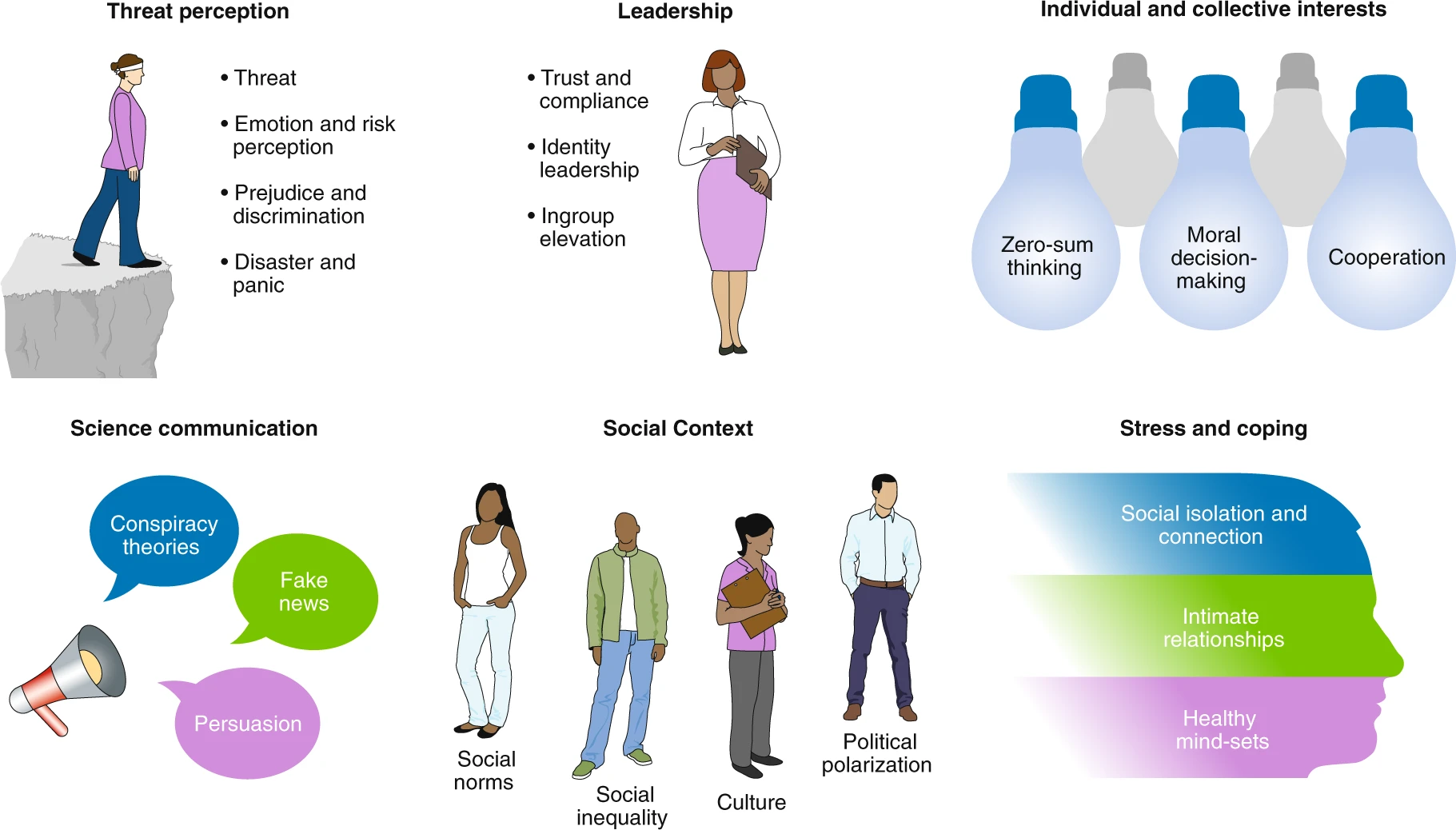This is the best paper as far as I know on behavioral biases in the current pandemic. The conclusion says:
Over 100 years ago, Science magazine published a paper on lessons from the Spanish Flu pandemic. The paper argued that three main factors stand in the way of prevention: (i) people do not appreciate the risks they run, (ii) it goes against human nature for people to shut themselves up in rigid isolation as a means of protecting others, and (iii) people often unconsciously act as a continuing danger to themselves and others. Our paper provides some insights from the past century of work on related issues in the social and behavioural sciences that may help public health officials mitigate the impact of the current pandemic. Specifically, we discussed research on threat perception, social context, science communication, aligning individual and collective interests, leadership, and stress and coping.A century ago paper: Soper, G. A. The lessons of the pandemic. Science 49, 501–506 (1919).
First, public indifference. People do not appreciate the risks they run. The great complexity and range in severity of the respiratory infections confuse and hide the danger. The infections vary from the common cold to pneumonia. They are not all separate entities by any means. An attack which begins as a coryza or rhinitis may develop into a pharyngitis, tonsilitis, laryngitis, bronchitis or pneumonia. The gravity increases with the progress toward the lungs. The infection sometimes seems to begin in the chest, sometimes in the throat, sometimes in the head. It may stop where it started or pass through several phases. This is the story of the common cold. It is generally more discomforting than dangerous. Most people get well without skillful treatment, or indeed any great interference with business. No specific virus is known to produce it.
